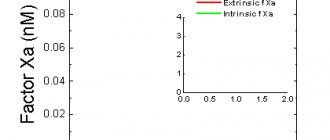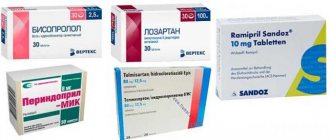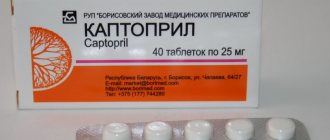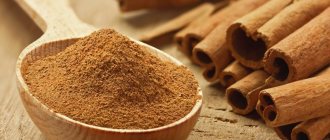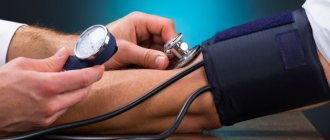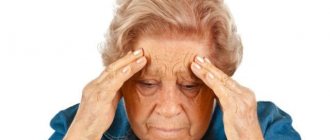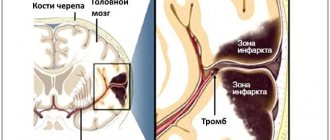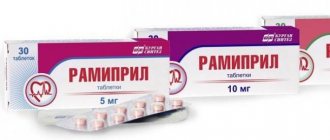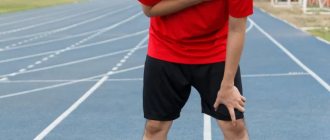Low blood pressure during a stroke is deadly.
Photo: Valery ZVONAREV
If you give a person medication to lower blood pressure during a stroke, you are literally killing the patient, this is deadly! This warning was made by the chief physician of the Moscow City Clinical Hospital No. 71, Alexander Myasnikov, on the Rossiya-1 TV channel.
However, most people are aware that high blood pressure is one of the main prerequisites for heart attacks and strokes. This means that if a vascular accident occurs, you need to quickly give the victim a pill to lower the pressure, many are sure. And this is a big mistake! - confirmed to kp.ru one of the leading Russian cardiologists, deputy director for scientific work of the National Medical Research Center for Cardiology of the Russian Ministry of Health, Doctor of Medical Sciences, Professor Sergei Tereshchenko.
“This is stated in all medical recommendations and guidelines for doctors: if a patient develops a stroke due to high blood pressure, then there is no need to lower it, you cannot immediately give antihypertensive drugs,” says Sergei Nikolaevich. — When a person experiences an acute cerebrovascular accident (that’s what a stroke is called in medical language. — Ed.), then by lowering the pressure, we will further worsen the blood supply to the brain. And thus we will further aggravate the severity of the consequences of a stroke,” explains the expert.
In other words, due to weakened blood flow as pressure decreases, the brain will suffer more from a lack of oxygen and nutrients. Because of this, the death of nerve cells will accelerate.
Types of disease
Stroke is a pathology accompanied by impaired blood circulation in certain areas of the brain. The condition is accompanied by oxygen starvation and a severe deficiency of nutrients, which ultimately leads to the death of brain cells. As a result, there is a complete or partial loss of functions for which the affected area was responsible.
Depending on the underlying cause, there are two types of stroke:
- Ischemic (most common). It is a consequence of blockage of the lumens of cerebral vessels. The disease progresses slowly and is not accompanied by hemorrhage, but is accompanied by the death of brain cells.
- Hemorrhagic. Caused by hemorrhage in the brain tissue as a result of rupture of a local vessel. Due to the accumulation of blood and pressure exerted on a certain area of the brain, its functions are impaired.
Important! The cause of a stroke may be cerebrovascular disease.
Symptoms, signs and first aid
Anyone can have a stroke, which is why it is so important to know the primary symptoms of the condition. It is indicated by:
- weakness in the limbs;
- fainting conditions;
- numbness of half the face, distortion of features;
- Strong headache;
- speech impairment, misunderstanding;
- various visual impairments;
- complete or partial paresis;
- impaired coordination of movements up to its complete loss;
- impaired skin sensitivity;
- instability and tension of the pulse.
If we talk about what pressure is possible during a stroke, then its indicators can be both low and high. To make sure that the patient has had a stroke, he must be asked to perform several familiar actions. For example, smile broadly or say a few words. He will not succeed: the affected part of the face will remain motionless, and speech will be unclear, as if the person’s mouth is filled with porridge and he is trying to speak through it.
What to do if this happens? First of all, immediately call an ambulance. Lay the patient down so that the head is elevated in relation to the legs, unbutton the collar, and remove the woman’s bra. A person must breathe deeply. Trying to lower blood pressure on your own is strictly prohibited.
What blood pressure can trigger the development of a stroke?
At what blood pressure level can a stroke occur and can the condition develop at normal blood pressure? It is worth noting that most often a stroke occurs in hypertensive patients. The reasons are:
- Stably high blood pressure, which does not decrease even while taking medications;
- sharp jumps in indicators caused by a stressful situation or significant physical activity;
- refusal of treatment for hypertension and heart disease.
Doctors call the physiological level of blood pressure, at which all body systems operate in a natural mode, a level of 120/80 mm. rt. Art. When it increases to 180/120, we can talk about the development of a hypertensive crisis, which can quite easily turn into an apoplexy (stroke).
The danger in terms of the development of pathology is represented by too small a difference between the upper and lower blood pressure readings. If it is less than 40 units, then the likelihood of blockage of the vascular lumen increases significantly. Therefore, a blood pressure of 130/110 is more likely to trigger the development of a stroke than a blood pressure of 160/90.
Acceptable indicators and pressure deviations after impact
What blood pressure should a patient have after a stroke? Everything will depend on the type of pathology.
Ischemic form
During the first few hours after the formation of the condition, almost all patients experience high blood pressure. This is a protective reaction of the brain aimed at stabilizing the work of the myocardium. That is why a specialist should select antihypertensive drugs, taking into account the current condition of the patient.
Incorrectly selected medications can reduce blood pressure too much. The worst outcome in this case may be the death of a person. In addition, recovery after a stroke will be longer and more difficult.
Indications for emergency reduction of blood pressure are:
- increase to 180/220–100/120 mm. rt. st;
- the need to administer an antithrombotic agent;
- development of systemic circulatory failure;
- diagnosing aneurysm/arteriovenous malformation of cerebral vessels;
- disorders of the kidneys.
During the first 48–72 hours after an ischemic stroke has occurred, blood pressure can be reduced by no more than 15% relative to the existing one. At this time, increased blood pressure is normal.
Important! In patients who do not have a history of hypertensive pathology, blood pressure should not fall below 165/95 mm. rt. Art. In the presence of the disease, the minimum level is determined by 185/105 mm. rt. Art.
It is very important to protect the patient from factors that can provoke a sharp increase in blood pressure. These include nervous tension, severe pain, and fluid retention.
Hemorrhagic form
This type of stroke occurs against the background of a significant increase in blood pressure, so antihypertensive therapy should be started as early as possible. Taking medications helps:
- reducing the volume of the hematoma, stopping its spread;
- decrease in intracranial pressure;
- blocking the development of swelling of brain tissue.
The critical level of blood pressure, upon reaching and overcoming which it is necessary to take measures to reduce, is considered to be 140/90 mm. rt. Art. But the decline should be gradual. During the day, it can be lowered only by 20% relative to the current one.
Pulse after stroke
An acute disruption of the blood supply to the brain that occurs during a stroke has serious consequences for the patient’s body. And not only at the time of the acute course of a stroke, but also in the future. A number of consequences are associated with changes in the nature of cardiac activity, therefore, pulse indicators after a stroke are the most important guideline for doctors observing the patient.
Pulse after a stroke - why control is needed
If we consider the general statistics of cardiovascular diseases, then mortality from cerebrovascular pathologies exceeds 30%. Stroke is one of these pathologies. If a patient has heart valve defects, coronary diseases, or heart failure, then all this worsens the prognosis for patients who have suffered a cerebrovascular accident. That is why monitoring the pulse after a stroke becomes of great importance when monitoring patients.
What happens to the heart after a stroke?
Normally, the heart's function is regulated by the sympathetic and parasympathetic nervous systems. The first activates the work of the heart, increases the heart rate, the second depresses it. If a person is healthy, then there is a balance in the body that is regulated by various parts of the brain according to the feedback principle: receiving signals from organs and systems, they give “commands” to the heart, and the heart rate increases or decreases.
During a stroke, brain tissue is damaged and the previously existing autonomous system for regulating the functioning of the heart is disrupted. The extent to which the autonomic system regulating the heart is damaged during a stroke affects the survival of patients, which is why increasing or decreasing the heart rate is so important for the doctor.
Doctors talk about another important indicator: heart rate variability (HRV). A person's heart rate cannot be the same all the time and varies within a certain limit. It was called VRS. After a stroke, this important indicator is also disrupted, which means there is a risk of arrhythmia, unstable hemodynamics, and deterioration of recovery processes at the site of the stroke.
High pulse after a stroke: causes and possible consequences
Doctors may notice an increase in heart rate in the first days after a stroke to 100 beats per minute or higher (tachycardia). However, this indicator must be monitored in combination with blood pressure.
Disruption of the heart's regulatory system leads to the fact that a high pulse can be combined with high blood pressure (systolic pressure above 180 mm Hg). In this case, the pressure and heart rate must be reduced, since maintaining this situation worsens the condition of the patient with a stroke.
With constant monitoring of blood pressure and intracranial pressure, the patient is given antihypertensive drugs. In this case, the pressure is reduced by no more than 15% of the initial one, in order to prevent a sharp jump and re-impairment of cerebral circulation. Then the systolic pressure is maintained at 160-180 mmHg. Art., depending on what the patient’s blood pressure is normal and what it was at the time of admission to the hospital.
With a high pulse, the pressure can also be low: the chambers of the heart, which contracts at an increased frequency, do not have time to fill with blood, so the pressure in the vessels does not increase. If doctors note a high pulse and low blood pressure during a stroke (systolic pressure around 110 mmHg or lower), this can lead to a further deterioration in blood supply to the brain. In this case, the patient is given saline and drugs that increase vascular tone.
An increased heart rate after a stroke may indicate not just an increase in heart rate, but a rhythm disturbance. For example, a patient may develop ventricular extrasystole, in which contractions occur “out of sequence.” As evidenced by observational data, this worsens cerebral blood flow, reducing it by more than 10%. In this case, therapy should be aimed at stabilizing the heart rhythm.
Low heart rate after a stroke: causes and possible consequences
A low heart rate during a stroke (50 beats per minute or lower, or bradycardia) is also an alarming sign. A decrease in heart rate after a stroke or alternating tachycardia and bradycardia signals that the damage has affected the brain stem structures. In this case, the work of the respiratory and vasomotor centers, which are also located in the trunk, may stop or be disrupted.
In some patients, stroke is accompanied by weakness of the sinus node (SSN). A low heart rate may also indicate this. With CVS, the part of the heart that is responsible for the normal rhythm of contractions stops working correctly. The heart “beats up”, contractions become less frequent, cease to be rhythmic, and the efficiency of the heart decreases. Patients with cardiovascular disease are advised to install a pacemaker, but if a person has suffered a stroke, the doctor determines the treatment option based on his condition.
With a low pulse, as well as with a high one, it is necessary to simultaneously monitor the level of blood pressure. If it decreases (and normally this should not be the case), then this is a dangerous disruption of the normal blood supply to the brain. In this case, it is necessary to achieve normalization of pressure, including with the help of drugs that increase vascular tone.
Patients who have had a stroke, especially in the first days after an acute cerebrovascular accident, must constantly monitor their heart rate and blood pressure. There are different options for high or low pulse and blood pressure disorders, and the doctor determines the patient’s management tactics only based on a combination of these indicators. Also, by the nature of changes in heart contractions, a specialist can guess which parts of the brain are affected as a result of cerebrovascular accident. Having confirmed the diagnosis through detailed diagnostics (for example, using MRI), doctors can choose the best option for further treatment of the patient.
Sources:
https://www.science-education.ru/ru/article/view?id=14271
https://ppt-online.org/159585
https://cyberleninka.ru/article/v/narusheniya-serdechnogo-ritma-u-bolnyh-s-ishemicheskim-insultom
https://www.vestar.ru/article.jsp?id=10761
Low and high blood pressure
During the first 24 hours after the impact, maintaining high blood pressure is an acceptable norm. The danger is high blood pressure that persists for a week after a stroke. The symptom indicates incorrect treatment. In this case, the patient becomes incapacitated and develops neurological disorders.
Such negative consequences for the patient’s health are due to the continuing increase in cerebral edema, which results in wedging of the brain stem into the occipital part. It is possible that breathing processes may be disrupted until a critical condition develops, as well as heart failure and cardiac arrest.
Complications of hypertensive crisis
If the pressure, despite the therapy, still jumps, then the consequences may be as follows:
- re-strike;
- expansion of the ischemic focus;
- development of encephalopathy;
- hemorrhage in the skull.
Why does a patient have low blood pressure after a stroke and why is this condition considered negative by doctors? A rapid decrease in blood pressure occurs against the background of the following pathological conditions:
- development of a major stroke;
- brain stem damage;
- the formation of cardiogenic shock against the background of a heart attack;
- heart rhythm disturbance;
- dehydration;
- blockage of the pulmonary arteries;
- blood poisoning;
- aneurysm.
Low blood pressure values during the rehabilitation period indicate progression of the pathology. The prognosis in this case is extremely unfavorable, this applies to both recovery and human life. A decrease in blood pressure can occur against the background of regular use of hypertensive drugs that were prescribed to the patient even before the stroke developed.
But if the reason for this is not drug treatment, then this is a signal that the body is unable to independently regulate blood pressure as a result of impaired cerebral blood circulation. Medical statistics show that severe hypotension during the first few days after a stroke causes the death of the patient.
Features of treatment
If blood pressure decreases after a stroke, the patient is advised to seek help from a doctor. After examining the patient, the specialist will decide what to do in a particular case. In case of hypotension, the patient is advised to adjust his lifestyle and take medications. During the treatment period, you must strictly adhere to certain rules:
- A person should lead an active lifestyle and exercise regularly.
- The patient needs to be provided with a balanced diet. The patient is allowed to eat any food. He must strictly adhere to his diet. Experts recommend that people have breakfast with any food and drink coffee.
- If you have hypotension, follow a sleep and rest schedule. A person should sleep at least 7 hours a day. If you have sleep disturbances, it is recommended to consult a psychotherapist and take medications prescribed by your doctor.
After resting, the patient is strictly forbidden to get out of bed abruptly, as this can lead to collapse or loss of consciousness.
- If the patient’s condition after a stroke allows it, then he is recommended to do a light warm-up in the morning. The patient must move and bend the limbs, make circular turns of the head and neck. It is recommended to carry out the manipulation within a few minutes.
- Treatment of blood pressure requires the exclusion of psychotherapeutic effects. The patient is not recommended to measure blood pressure frequently, as this will lead to problems . Manipulation is necessary only if your health deteriorates. This will provide an opportunity to correctly assess the effectiveness of therapy.
- If the indicators increase, it is recommended to take appropriate medications. The modern pharmacological market does not have a huge number of drugs to increase blood pressure.
Experts advise patients to take Citramon, tincture of ginseng, Caffeine-sodium benzoate, tincture of Eleutherococcus, Pavntokrin, Chinese schisandra. With the systematic use of medications, a persistent increase in blood pressure is observed. Prescription of medications after a stroke should be carried out only by a doctor in accordance with the indications and individual characteristics of the patient.
If a person’s blood pressure drops sharply, it is recommended that he be given first aid. The patient is placed on a horizontal hard surface and his lower limbs are raised. It is necessary to ensure that the head is located below the body, which will ensure blood flow to the brain.
After this, the neck is massaged in the area of the carotid artery. A cold compress is applied to the person's forehead. With the help of the above measures, it is possible to stabilize the normal level of pressure. If the patient does not experience relief, it is recommended to call an ambulance.
If a patient experiences a decrease in blood pressure, he is recommended to lead an active lifestyle. During the period of physical activity, there is an improvement in the supply of oxygen to the brain and other organs. If a person is active during the day, this will have a positive effect on the quality of sleep at night . The frequency and intensity of physical activity is determined by the doctor after a preliminary examination of the patient and taking into account his individual characteristics.
Patients are advised to eat a light diet. When blood pressure decreases, it is recommended to avoid overeating. This will lead to overstrain of the digestive processes and loss of energy. If you have hypotension, excessive consumption of coffee is strictly prohibited, as this drink can be addictive. The maximum dose of coffee is two cups per day. If possible, the patient is recommended to sleep for 1-2 hours during the daytime.
Treatment for lowering blood pressure after a stroke involves using a set of measures that allows the levels to stabilize for a long time.
Causes of blood pressure surges
A sharp fluctuation in blood pressure after a stroke occurs when the organs and systems of the body are unable to perform their functions. Most often it is the brain that is affected. Against the background of unstable blood pressure, both cardiac and peripheral circulation worsens, and the destruction of the walls of blood vessels also occurs. The patient develops an acute form of atherosclerosis. The development of recurrent strokes cannot be ruled out.
The main danger lies not in the increase or decrease in pressure, but in its constant fluctuation
The leading causes of sudden changes in blood pressure that occur after a stroke are:
- disturbances in the functioning of the central nervous system;
- low mobility of the vasomotor center;
- high blood sugar levels;
- hormonal imbalance;
- changes in the electrolyte composition of the blood.
Important! With a hemorrhagic stroke, the risk of developing a second stroke is high. This usually happens on the fifth or sixth day after the first blow.
Stroke in hypotensive patients
The development of a stroke is also possible with low blood pressure (in people suffering from hypotension). The formation of pathology is due to the body’s inability to independently eliminate the impending blow. A stroke in hypotensive patients can be triggered by features of a person’s lifestyle, stressful situations, disturbances in the functioning of internal organs and systems as a whole, and the use of antihypertensive medications.
The cause of stroke development against the background of hypotension can be:
- a sharp increase in blood pressure - occurs as a result of severe stress, overwork, as a side effect of the drug;
- rupture of an aneurysm - can be triggered by lifting weights, staying in a prolonged inclined position in hot rooms or under the open sun - a violation of the integrity of the vessel occurs as a result of overstrain;
- bleeding disorder - in this case, the likelihood of blood clots and blockage of blood vessels in the brain increases.
In the chronic form of hypotension, the likelihood of developing an ischemic stroke increases significantly with age. In the presence of cardiovascular pathologies, the risk of hemodynamic stroke increases. This is a subtype of the ischemic form, caused by circulatory decompensation. Its cause may be:
- atrioventricular block;
- myocardial infarction;
- weak sinus syndrome;
- atrial fibrillation.
Parkinson's disease is often accompanied by hypotensive crises, which, in turn, can cause the development of hemodynamic stroke. In hypotensive patients, signs indicating the formation of a hemorrhagic form of stroke are almost completely absent.
The condition is characterized by a slow onset and a long period of persistence of symptoms of brain damage with low blood pressure. The patient does not experience loss of consciousness or headaches. But almost all the precursors are typical for ischemic stroke. Most often, symptoms occur at night or in the morning.
Complications
If hypotension is not treated in a timely manner, the patient experiences a variety of undesirable effects. With physiological hypotension, no serious complications are observed . From early childhood, the human body independently tries to raise the numbers, which can cause the development of chronic hypertension.
With pathological hypotension, we can talk about the development of serious diseases in the form of gastrointestinal bleeding, anaphylactic shock, myocardial infarction, hypothyroidism, hypocortisolism. If the pathology develops against the background of autonomic disorders, then this causes a sudden loss of consciousness and injury to the soft tissues of the head.
Most patients experience memory loss. The patient's brain becomes less resilient to stress. The occurrence of such complications is explained by the fact that, against the background of a decrease in blood pressure, oxygen enters the nerve cells in insufficient quantities.
With prolonged hypotension after a stroke, patients' visual acuity decreases. The pathological process is accompanied by impaired coordination of movements. Prolonged progression of the symptom leads to cardiac dysfunction. With pathology, the patient becomes less resistant to physical activity.
A decrease in blood pressure after a stroke is a serious symptom that leads to the development of various complications. The pathological process develops against the background of other diseases in the body or exposure to provoking factors. If a decrease in pressure is observed for a long time, then appropriate treatment with the use of drug therapy and lifestyle correction is recommended, which will eliminate the possibility of complications.

